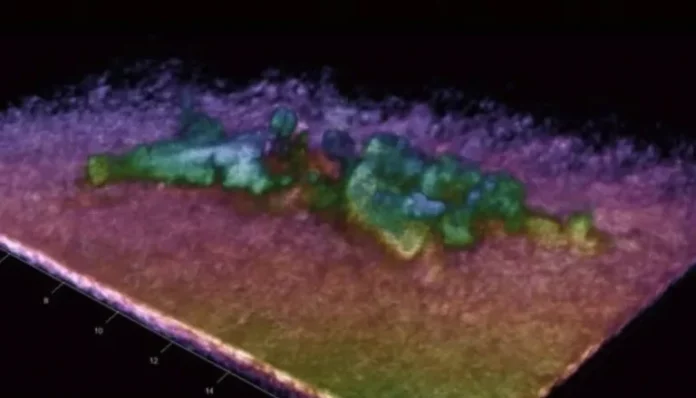The National Transportation Safety Board (NTSB) announced earlier this week that sonar equipment has located wreckage from the float-equipped de Havilland DHC-3 Turbine Otter that crashed into Washington state’s Mutiny Bay last week. According to the NTSB spokesperson Jennifer Gabris, on Saturday, sonar located a “large section” of debris, matching the length and width of the plane. The wreckage was pinpointed some 190 feet below the surface of Puget Sound a short distance from Whidbey Island, where the aircraft took off for a short leg to Renton, Washington. The crash occurred just 18 minutes into the flight.
To date, only small portions of debris and the body of one of the 10 victims on board, 29-year-old Seattle attorney Gabrielle Hanna, have been recovered. As previously reported by AVweb, the Walter-engine-converted Otter crashed on the afternoon of Sept. 4.
The NTSB tapped the National Oceanic and Atmospheric Administration (NOAA) and the University of Washington’s Applied Physics Laboratory in searching a 1 3/4- by 3/4-mile area with side-scan and multibeam sonar and 3D instruments. The site was where up to 24 witnesses from boats and on shore reported that the plane had crashed. The search was hampered by the depth of the water and the current, reported as 3 to 5 knots.
According to the NTSB, “Due to the depth of the water and the current, the most suitable tool for recovery is a work-class remotely operated vehicle [ROV]. NTSB continues to be in communication with federal agencies and local companies to obtain a work-class ROV.”
Besides the urgency of recovering the remains of the nine still-missing victims, including pilot Jason Winters, the NTSB has cited the importance of recovering the wreckage to help determine the cause of the crash. Experts have theorized that the suddenness and steepness of the descent (estimated at up to 8,000 feet per minute) suggest structural failure of the tail.




































AT least a full failure, eg complete dislodging of the tailplane, can be ruled out. A plane w/o the complete stab will nose dive immediately and aggressively, not climb as it did.
Unless the stabilizer broke in a manner to first push the nose up… broke off… then the plane would nose dive.
And if it failed during or after the climb?
Too deep to dive easily. Incredible how remote controlled subs can bring things to the surface these days.
Must be one of the saddest recent sonar pictures to be published.
Apparently these planes have had issues with trim tabs leading to near accidents and one crash. Sounds like the planes should be grounded and inspected.
Otters and Beavers are great airplanes, no surprise it have been upgraded and flying “forever”. There’s been some issues with structural failure on these. Again, no surprise for many– if not most airplanes this type — are taking off and landing on water and salt water. The operators should be more careful with “regular” inspections and operations on these. So sad to see great planes be involved with such crashes. RIP whoever was flying on it, what a sad event.
I guess a lot of people “follow” the – from now unproven – opinions of Blancolirio. As far as I’m concerned, I’ll wait for a lot of more proofs.
Yes, but everyone has said that they are stating their opinions. And ya know what? When a plane acts like that, I think of control failure, whether cable system or actual structure.
The fact there is a problem, a problem many didn’t know about, people can take a look at their aircraft. Or if you are going to fly in one, make sure they know and have looked at the problem.
Sticking your head in the sand and hoping other people know of the issues, just produces more dead bodies. Had they not done the research, research the NTSB is paid to do, we wouldn’t know there is something we need to look at when getting in one of these planes to fly.
Robinson has these types of aircraft warnings published in their manuals for every pilot to read before flying one. I would say every aircraft manual should have a section describing problems that have caused crashes, be it improper pilot use of the aircraft, to mechanical issues.
This would likely assist in doing away with frivolous lawsuits that are causing manufacturers to shy away from making GA aircraft that a normal person can afford.
I suppose the 3 previous incidents of the exact same nature and nearly same result sways a lot of thought towards the trim tabs and elevator anti servo tabs.
The sonar image is very grainy but in any case appears to show the fuselage, nose-first, upright on the floor of the Sound. It appears that the only part of the tail still attached or visible is at least part of the left stabilizer. The front is torn beyond recognition and the wings and floats are elsewhere.